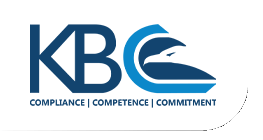By Sian Thurtell, Chief Operating Officer at KBC Health & Safety
It is essential to establish internal risk management control processes that align with specific strategic management outcomes. At KBC Health & Safety, we firmly believe that effective Operational Risk Management Processes (ORMP) have two core aspects: alignment and attunement. Alignment creates a shared understanding of risk management across all levels of the organisation, without which, sustainable behavioural change in workplace safety is not possible. Attunement requires a cognitive shift which arises from alignment and motivates learners to apply their training in the workplace through gamification. and fun, inspirational experiences.
Programme Methodology
To ensure that technical safety terminology and operational risk management are understood at all levels of the organisation, we have found Cognitive Behavioural Therapy and Systems Learning to be an effective foundation for ORMP. The objective is to create sustainable behavioural change and foster an agile risk management culture throughout the organisation. Our programmes incorporate blended learning to guide learners to an understanding of the necessary safety behaviours, motivating them to adopt new safety behaviours and instilling the belief that they can behave differently.
Impact at every level
We take a hierarchal approach, from executive to operator level to help employees develop a fresh perspective by identifying hazards and implementing appropriate controls to mitigate potential risks within their environments. By engaging with subject matter experts, we develop crucial risk-level-specific programmes that break down complex terminology and techniques into digestible modules.
Making theory practical
An engaging learning experience is critical to ensure employees understand their role in the risk management process, regardless of their level or scope of operation, and to further apply what they have learnt in the workplace. The inclusion of a practical component of the training takes the form of a Hazard Arena in which learners get to apply theory from the classroom. For example, they might need to conduct a risk assessment, which requires the application of the SLAM principle – Stop, Look, Assess, and Manage. Other effective methodologies include Virtual Reality, where learners will put on a headset to show them where they need to identify hazards and Role Play which provides opportunities to unpack how to approach certain safety-related circumstances, particularly at the supervisor level.
Learn, apply, and reflect
Senior-level training includes elements of personal reflection on their own behaviours within the work environment and the analysis of critical-impact case studies. This golden thread provides a reality check that runs throughout all our programs because it is powerful from an attunement perspective.
Responsible and accountable
Personal and collective responsibility is intrinsic to safety for which each individual is accountable. It is necessary to move away from a culture of shifting blame to unpacking the root cause of the incident and working together to determine how we are responsible for preventing recurrence. KBC’s approach to education in these concepts will contribute effectively to moving organisations through the journey of alignment to attunement.



